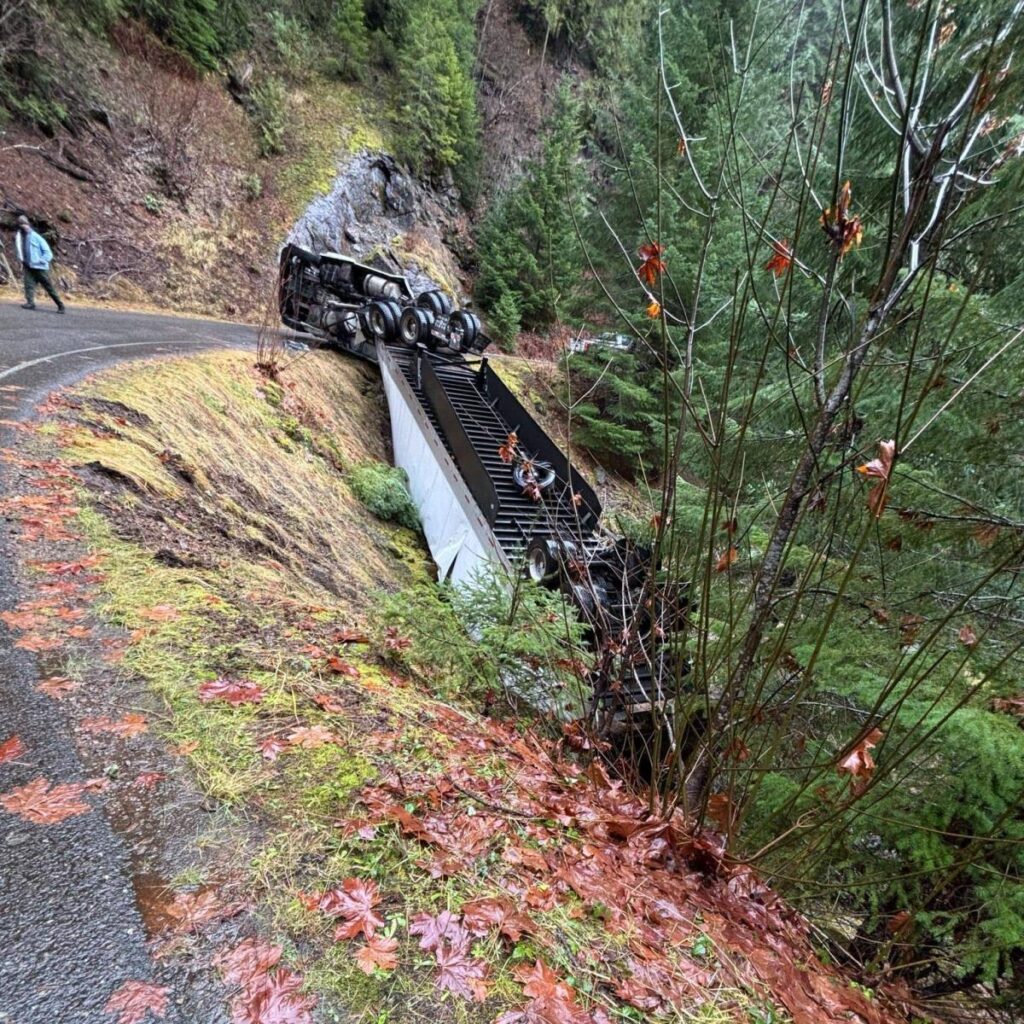On Saturday, a significant incident occurred in the Willamette National Forest in Oregon when a semitruck transporting a load of pesticides overturned while navigating a steep and winding mountain road. The accident took place south of Detroit Lake and northeast of Green Peter Reservoir, specifically on Quartzville Road, also known as Forest Service Road 11. The driver attempted to follow an alternate route from U.S. Highway 20, and while no pesticides were released during the crash, a small amount of diesel fuel did spill. Emergency agencies were promptly on-site to manage the situation and minimize environmental impact.
Fortunately, officials confirmed that the situation was under control, with environmental monitoring conducted by the Department of Environmental Quality. Immediately after the incident, cleanup efforts focused on addressing the diesel fuel leak, and crews worked to drain the remaining fuel and fuel tanks from the truck. Erin Zysett, a spokeswoman for the Oregon Office of Emergency Management, stated that their primary objective was to stabilize the semi-truck hanging precariously off the mountain’s edge, allowing safe access for the removal of the packaged pesticides and the vehicle itself.
The truck’s location posed unique challenges for recovery efforts due to its precarious position near a cliff. The accident occurred at a sharp turn near milepost 32, close to Minniece Creek, and further complicated by ongoing winter conditions, which often make this primarily recreational route less accessible. As a precaution, a closure order for Forest Service Road 11 was implemented, restricting access between mileposts 26 and 34 to facilitate the emergency response and recovery process.
The driver’s choice to take an alternative route has been attributed to potential weight and weather restrictions on the highway, although the exact reasons remain unclear. This incident underscores the risks associated with navigating unfamiliar routes, particularly for large vehicles such as semitrucks. Erin Zysett advised against relying solely on apps like Google Maps during emergency rerouting, recommending resources like TripCheck.com or local traffic information services for safer navigation.
As rescue teams worked diligently to extract the truck and its hazardous cargo, local officials emphasized the importance of safety and proper planning when traversing remote roads. Given that the forest road is not often traveled by semitrucks, this accident demonstrates the interplay of navigation technology, emergency situations, and the unique challenges posed by mountain terrain in environmental contexts.
Zach Urness, the outdoor reporter covering this incident, has a long history of reporting on outdoor activities in Oregon and emphasizes the significance of staying informed about travel conditions and safety in wilderness areas. Such reports not only highlight current events but also serve as a reminder for all travelers to take caution and proper measures when choosing routes in less familiar territories, particularly in regions subject to natural and environmental hazards.

